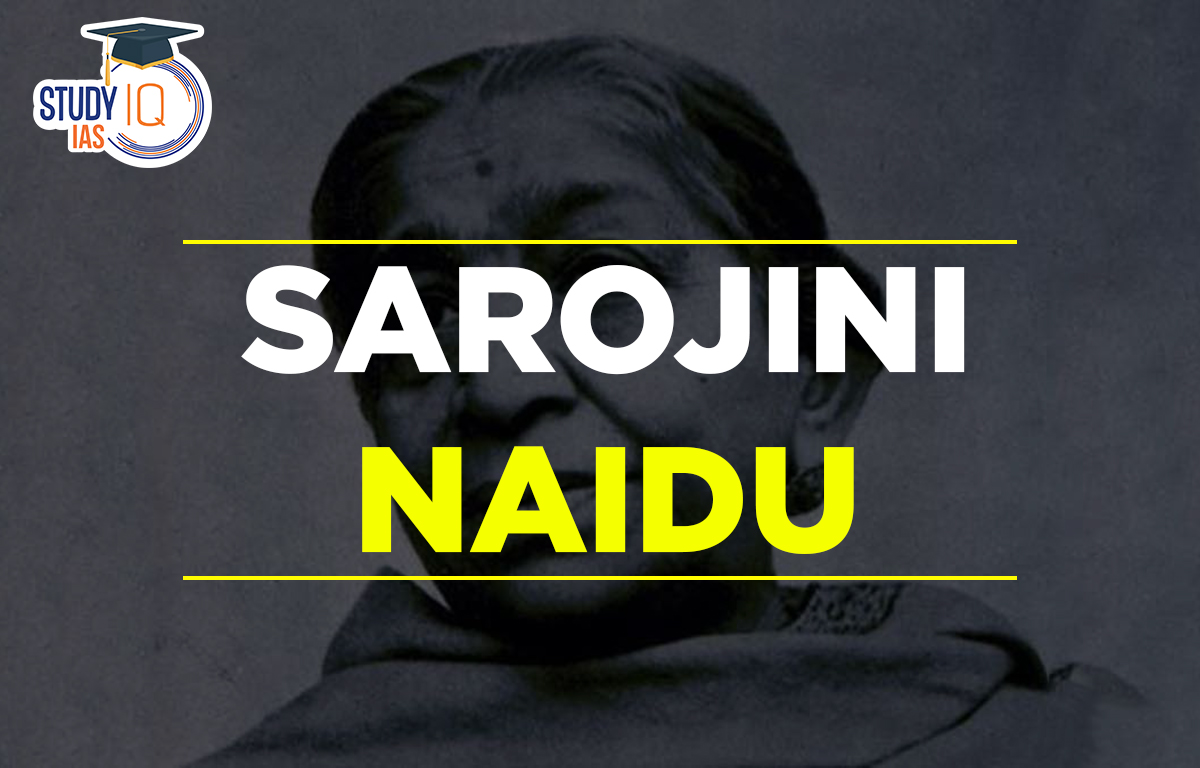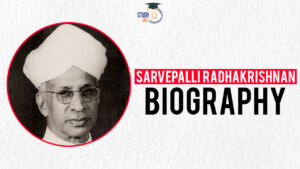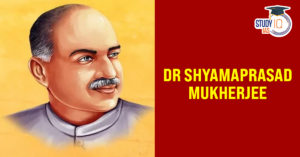Table of Contents
Who is Sarojini Naidu?
Sarojini Naidu was a political activist, poet, and supporter of Indian independence. She goes by the name “The Nightingale of India,” and she is a well-known orator and poet. Sarojini Naidu was born on 13 February 1879, Hyderabad and Died on 2 March 1949, Lucknow, due to cardiac arrest at 3:30 p.m. Naidu was a gifted young author who won a scholarship to study abroad for her play “Maher Muneer” when she was young. She was elected as the Indian National Congress‘ second female president. She was the Indian state’s first female governor after independence. She achieved literary success with her collection of poems. She released “Golden Threshold,” a collection of poems, as her debut book in 1905. Sarojini Naidu “influenced the Indian Renaissance movement and had a mission to improve the life of Indian woman,” according to contemporary poet Bappaditya Bandopadhyay. In this article, you will learn about Sarojini Naidu and her achievements.
Sarojini Naidu Birth Anniversary
India celebrates Sarojini Naidu’s 145th birth anniversary on February 13, 2024, honouring her dual roles as poet and political activist also India commemorates February 13 as National Women’s Day in her honour. She was born on February 13 1879 in Hyderabad. Known as the ‘Nightingale of India,’ she played a pivotal role in the Indian National Movement, earning respect from leaders like Mahatma Gandhi and Jawaharlal Nehru. Elected President of the Indian Congress in 1925, her literary prowess shone in works like “Golden Threshold.”
Sarojini Naidu Death and Legacy
Sarojini Naidu was the first female governor of Uttar Pradesh. Sarojini Naidu passed away in Lucknow, Uttar Pradesh, on 2nd March 1949 due to cardiac arrest at 3:30 p.m. She lived her illustrious life according to her own words: “I shall not quit the cause of freedom as long as I have life, as long as blood flows through this arm of mine… I am merely a poet and a woman. But as a woman, I offer you the fortitude, courage, and weapons of faith.
Additionally, I raise the flag of song and sound, the bugle call to arms, as a poet. How shall I kindle the flame which shall waken you men from slavery…” Her childhood residence at Nampally was bequeathed to the University of Hyderabad by her family, and it was christened as ‘The Golden Threshold’ after Naidu’s 1905 publication. The University renamed its School of Fine Arts and Communication as ‘Sarojini Naidu School of Arts and Communication’ to honour the Nightingale of India.
Sarojini Naidu History
Sarojini Naidu was born on 13 February 1879 in Hyderabad. Sarojini Naidu, also known as the “Nightingale of India” for her poetic talents, was a multifaceted figure in Indian history. Born in 1879, she was a prominent figure in the fight for independence. Naidu actively participated in non-violent resistance and civil disobedience, even facing imprisonment for her cause. Notably, she became the first Indian woman president of the Indian National Congress and later the first woman governor of Uttar Pradesh in independent India, paving the way for future generations of women in leadership roles.
Sarojini Naidu Biography
Sarojini Naidu (née Chattopadhyay) on February 13, 1879 in the city of Hyderabad. Dr. Aghore Nath Chattopadhyay, her father, was a scientist, philosopher, and teacher. He started Hyderabad’s Nizam College. In Bengali, her mother, Varada Sundari Devi, was a poetess. The first Indian National Congress member in Hyderabad was Dr. Aghore Nath Chattopadhyay. Aghore Nath was fired from his post as principal due to his involvement in social politics.
The Berlin Committee was founded mainly thanks to one of his brothers, Virendranath Chattopadhyay. He was greatly affected by Communism while participating in India’s ongoing war for independence as a political activist. Harindranath Chattopadhyay, her second brother, was an accomplished dramatist and well-known poet. Sunalini Devi, her sister, was a dancer and actress.
Sarojini has always been a brilliant and gifted child. She was fluent in several languages, including Persian, English, Bengali, Urdu, and Telugu. Naidu excelled in her Madras University matriculation exams. Sarojini’s father desired that she pursue a career in math or science, but the young woman was more interested in poetry. She used her excellent writing abilities to compose “The Lady of the Lake,” a 1300-line English poem.
Dr. Chattopadhyaya praised Sarojini’s writing after being impressed by her ability to articulate her feelings in just the correct terms. A few months later, Sarojini penned the Persian play “Maher Muneer” with the help of her father. While studying in England, Sarojini fell in love with Muthyala Govindarajulu Naidu, a South Indian and non-Brahmin doctor. She became engaged to him at the age of 19 after returning to India, with the approval of his family.
In Madras in 1898, they were wed by the Brahmo Marriage Act (1872). Inter-caste marriages were not tolerated or permitted at the time of marriage in Indian society. She had a happy marriage. They have four Children.
Sarojini Naidu Role in Indian National Movement
Mahatma Gandhi and Gopal Krishna Gokhale, two illustrious leaders of the Indian freedom struggle, introduced Sarojini to politics in India. She made the decision to join the Indian liberation struggle after the partition of Bengal in 1905 had a profound impact on her.
She met with Gopal Krishna Gokhale on a regular basis, and he introduced her to other leaders of the Indian liberation movement. Naidu was persuaded by Gokhale to apply her knowledge and training to the cause. She put her writing on hold so she could completely commit to the political cause. Naidu interacted with Muhammad Ali Jinnah, C. P. Ramaswami Iyer, Pandit Jawaharlal Nehru, and Mahatma Gandhi.
She first met Jawaharlal Nehru in 1916, with whom she collaborated to improve the deplorable working conditions of the Indigo workers in Champaran, an area in western Bihar, and fiercely fought the British for their rights. Sarojini Naidu travelled all throughout India giving speeches about nationalism, women’s freedom, the dignity of work, and youth welfare. Together with Annie Besant and other notable figures, she contributed to the founding of the Women’s India Association in 1917. She also discussed with Congress the importance of including more women in the fight for freedom. As the representative of the Indian Nationalist movement, she travelled widely in the United States and several European nations.
Sarojini Naidu Freedom Fighter
Sarojini Naidu Freedom Fighter the Rowlatt Act, passed by the British government in March 1919, made it unlawful to possess seditious materials. Naidu was the first to join the Non-Cooperation Movement, which Mahatma Gandhi started as a form of protest. Sarojini Naidu faithfully emulated Gandhi and actively participated in his other activities, such as the Satyagraha Pledge, the Khilafat Issue, the Sabarmati Pact, and the Civil Disobedience Movement.
Together with other leaders, she spearheaded the Dharasana Satyagraha in 1930 when Gandhi was detained following the Salt March to Dandi. In 1931, she travelled with Gandhi to London to attend the Round Table Conference with the British government. Her political involvement and role in the struggle for freedom resulted in her serving prison terms in 1930, 1932, and 1942. Her 1942 arrest resulted in a 21-month sentence. As a member of the All-India Home Rule Deputation, she visited England in 1919. She was one of the two representatives from the Indian National Congress who went to the East African Indian Congress in January 1924.
She was chosen to lead the Indian National Congress Party in 1925 as a result of her devoted service to the cause of liberation. The world’s understanding of the subtleties of India’s nonviolent battle for freedom was greatly aided by Naidu. She travelled to Europe and even the United States to spread Gandhian ideals, and she played a role in making him become an international symbol of peace.
She was appointed the first governor of the United Provinces (now Uttar Pradesh) following India’s independence, a position she held until her death in 1949.
Sarojini Naidu Achievements
Sarojini Naidu was a remarkable woman who made significant contributions to Indian independence, literature, and social reform. Sarojini Naidu is admired for her work in Indian poetry in addition to her role and commitment to the Indian Nationalist Movement. Songs have been made from several of her compositions. She found inspiration in nature and the world around her, and the spirit of her patriotism was reflected in her writing. Here are some of her most notable achievements:
- Her collection of poems, titled “Golden Threshold,” was released in 1905.
- She later released two additional volumes, “The Bird of Time” and “The Broken Wings,” which were both very well received in both India and England.
- In addition to poetry, she also wrote essays and articles like “Words of Freedom” on social concerns like women’s empowerment and political difficulties.
Political Activist
- Dedicated her life to the Indian independence movement, becoming a prominent leader of the Indian National Congress.
- Participated in various protests, demonstrations, and strikes against British rule.
- Imprisoned multiple times for her activism, demonstrating her unwavering commitment to the cause of independence.
- Played a key role in the Civil Disobedience Movement and the Quit India Movement.
Social Reformer
- Advocated for social justice and equality for women, working to improve their education and participation in society.
- Helped establish women’s organizations and educational institutions.
- Spoke out against child marriage and other social issues that disproportionately affected women.
- Her work helped to raise awareness of social inequalities and contributed to progress towards a more just society.
Governor of the United Provinces
- After India’s independence in 1947, Naidu became the first female governor of the United Provinces (now Uttar Pradesh).
- Demonstrated her administrative skills and ability to connect with people from diverse backgrounds.
- Served as a role model for women, showing that they could hold positions of leadership and make a difference in society.
Sarojini Naidu Awards
Asian Academy of Arts and Marwah Studios presents the “Dr. Sarojini Naidu International Award for Working Women,” acknowledging the contributions of exceptional women professionals across the globe.
While there isn’t a nationally recognized award named after Sarojini Naidu, several institutions and organizations have established awards in her honour. These awards typically celebrate and recognize the achievements of women, particularly in fields she championed, like education, social work, and literature.
Sarojini Naidu Important Facts for UPSC
- She began a literary career at the age of 12. She wrote the play “Maher Muneer,” which received accolades and recognition from all around the world. She started her higher education early, attending Cambridge and London. This drama became well-known and impressed the Nawab of Hyderabad.
- The Nizam of Hyderabad gave her a scholarship when she was 16 years old, allowing her to attend London King’s College. Nobel Laureates Arthur Simon and Edmond Gausse gave her writing advice there, suggesting that she concentrate on Indian subjects. She highlighted contemporary Indian life and events in her poetry. She undoubtedly excelled as a poet of the 20th century by using poetry to describe her thoughts, feelings, and experiences.
- While attending college in London, she developed feelings for Padipati Govindarajulu Naidu, a non-Brahmin doctor. She was honest and bold enough to marry her love in 1898 when she was just 19 years old. Jayasurya, Padmaja, Randheer, and Leilaman were her four children.
- She joined the Indian National Movement in 1905, which was the beginning of her political career. She visited many locations in India between 1915 and 1918 to give lectures on social welfare, women’s empowerment, and nationalism. She founded the Women’s Indian Association(WIA) in 1917.
- The Golden Threshold, her debut collection of poems, was released in 1905. In addition, the second collection of poetry by Sarojini Naidu’s daughter Padmaja Naidu, titled “The Feather of the Dawn,” was published in 1961.
- Sarojini Naidu was the United Provinces of Agra and Awadh’s governor from 1947 to 1949, making her the nation’s first female governor.
- The most prominent person in India, Sarojini Naidu, is credited with founding a number of institutions, including the Sarojini Naidu Medical College, Sarojini Naidu College for Women, Sarojini Naidu School of Arts and Communication, and the Sarojini Devi Eye Hospital.
- She passed away on March 2, 1949, at Lucknow’s Government House, from a heart arrest. She had been the nation’s most ardent supporter and had backed him in all of his ideologies to free India from British control. She was referred to as “Mickey Mouse” by Mahatma Gandhi.
| List of Other Famous Personalities Biography | |
| Jhasi Ki Rani Laksmibai | Maharana Pratap |
| Rabindranath Tagore | Jyotiba Phule |
| Satyendra Nath Bose | Raja Ram Mohan Roy |
| Subhash Chandra Bose | Bhagat Singh |
Explore the page to uncover the untold stories for Other Famous Personalities Biography and gain insights into the profound impact they have had on the world. Check here this link: Biographies of Famous Personalities.


 Dr. Sarvepalli Radhakrishnan Biography, ...
Dr. Sarvepalli Radhakrishnan Biography, ...
 Dr. Shyama Prasad Mukherjee Biography, L...
Dr. Shyama Prasad Mukherjee Biography, L...
 Savitribai Phule Biography, Early Life, ...
Savitribai Phule Biography, Early Life, ...





















